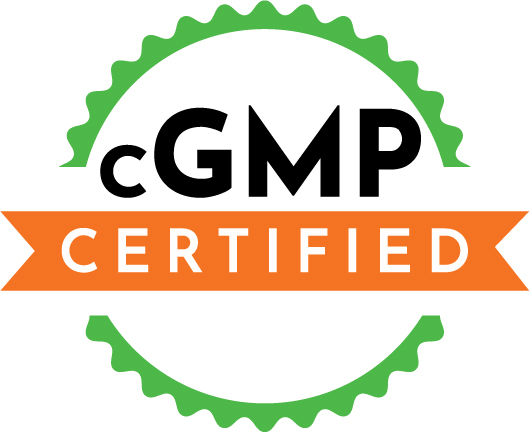News
News
Wildfires impact wildlife and pets, too. Here’s how you can help them.
“Los Angeles is home to a diverse ecosystem of animals. Now their lives and homes are at risk.
In just four days, blazing wildfires across Los Angeles neighborhoods have put 150,000 residents under evacuation orders, burned over 30,000 acres, destroyed more than 10,000 structures, and, as of Thursday, killed killed 10 people. Experts say it may be the costliest wildfire in US history. The fires are still ongoing, and the toll of destruction is still far from a final tally.
But it’s not just human lives and homes that have been taken and are still at risk. A reporter and a photographer helped a Pasadena woman rescue her chickens from her burning home. Another journalist interviewed two residents evacuating with their horses while surrounded by flames. On social media, people have posted videos of animals like dogs and deer wandering alone amid the fires, confused and distressed.”
Pets Are Hitching a Ride on the Travel Boom
“Travelers have been crowding into airports in record numbers this year — including on four legs and leashes.
Tom Carpenter and his wife travel with their Havanese dog whenever they can. “His day care would be $350 for a 10-day trip, so paying hotel fees and $100 each way to take him on a plane is worth it,” the 67-year-old Anacortes, Washington, resident said. “Plus, Mori hates being left alone.”
The Carpenters are among the many pet owners who are getting more comfortable bringing their animals on their journeys, adding to the broader demand for pet-related services far afield of veterinarian offices.”
Wild Alaskan Salmon Oil: Current Supply Situation and Future Options
Our team has recently returned from Supply Side West, one of the largest global expos for ingredient suppliers, where valuable insights were shared on current trends and challenges facing the fish oil industry. This year, a consistent and concerning theme emerged across discussions with our fish oil suppliers: Wild Alaskan Salmon supplies are in decline, and recovery may take years.
We heard this message echoed by multiple leaders in the industry. One CEO even shared, “There is simply not enough fish in the sea.” In response, many suppliers are beginning to offer blended products to conserve dwindling supplies, combining Wild Alaskan Salmon Oil with other high-quality oils, such as those from Pollock, Cod, or other non-Alaskan salmon sources.
These blends not only provide alternative options for our customers but also introduce unique benefits from different fish oils. Pollock, Cod, and Hoki oils, for example, each come with their own set of nutritional advantages. Depending on the ratios of oils used, we may still be able to emphasize that these products are “made with mostly Alaskan Salmon.”
In addition to blends, we have access to Norwegian Salmon Oil, which is currently available in greater quantities. However, due to the strain on Wild Alaskan supplies, we anticipate a potential shift across the industry toward Norwegian oil. This could lead to rising prices and, eventually, similar supply pressures.
As we navigate this supply challenge, we’re committed to exploring all viable options to ensure the continued quality and availability of our fish oil products. Stay tuned for further updates on how we’re adapting our offerings to maintain product integrity and meet customer needs in a responsible way.
Related Articles:
“Huge disaster”: Historically weak pink salmon runs strain Alaska’s seine fishermen – Alaska Beacon
Hurricane Helene Washes Away Beloved Rainbow Bridge
“They all got to take one last swim together.” An emotional tribute to North Carolina’s Rainbow Bridge. Tucked away in the mountains of western North Carolina at Lake Lure Flowering Bridge near Chimney Rock, stood a rainbow-painted bridge created by artist Amy Wald in 2022. From its rails, the collars and tags of beloved pets dangled. Following the devastating flooding in the wake of Hurricane Helene, the bridge has likely been washed away.
Service dogs help military veterans who struggle with PTSD.
Veterans paired with a service dog had 66% lower odds of a PTSD diagnosis, compared to a control group of vets still waiting for a service dog, researchers reported June 4 in the journal JAMA Network Open.
Global Pet Herbal Supplements Market to Surge Through 2034, Driven by High Demand
A strategic shift towards natural and herbal pet care solutions is fueling the market expansion as pet owners increasingly opt for organic and holistic approaches to their pet’s well-being.
This trend is further bolstered by a surge in pet spending, an aging pet population necessitating a focus on preventive healthcare, and the launch of innovative, natural ingredient-based supplements tailored to pet needs. Market players are collaborating and developing a broader array of herbal supplement offerings, catering to a growing demographic of health-conscious pet parents.
Animal Shelters are Overwhelmed by Abandoned Dogs. Here’s Why.
Man’s best friend is increasingly being abandoned on the street, often by people facing financial hardships who can no longer afford to feed or house them.
“Animal shelters generally reflect what is happening to people in a community and where there is food insecurity,” Stephanie Filer, executive director of Shelter Animals Count, told CBS MoneyWatch.
As 2023 came to close, there were 250,000 more animals in the shelter system than the year before, said Filer, whose group compiles data from nearly 7,000 shelters nationwide.
“Through November, our numbers are showing a continued and persistent gap in the numbers entering our shelters and leaving,” said Filer, who also noted an increase in puppies and purebred dogs being brought to shelters.
“In the past year, San Diego Humane Society, which takes in over 30,000 companion animals each year, observed a 20% increase in lost pets not retrieved by their owners,” Dr. Gary Weitzman, president and CEO of San Diego Humane Society, said in an emailed statement. “Families relinquish their pets for various, often heartbreaking reasons, including escalating costs of care, insufficient housing options for pet owners and limited access to veterinary care. We also believe a pause in spay/neuter surgery accessibility during the pandemic has also increased the number of animals in our shelters.”
Probiotics Promote Weight Loss in Obese Dogs
Researchers have identified 2 strains of probiotics that can be used to reduce weight in obese dogs. The research is published in Microbiology Spectrum, a journal of the American Society for Microbiology.
In the new study, the research team investigated metabolic diseases in companion animals and set out to identify probiotics suitable for long-term and safe treatment. “The initial challenge involved selecting specific metabolic diseases for examination, leading us to focus on the prevalent issue of ‘obesity in pets,’” said study principal investigator Younghoon Kim, Ph.D., professor in the Department of Agricultural Biotechnology, College of Agriculture and Life Science (CALS), Seoul National University, in Korea.
Five Emerging Trends In Pet Health Care For 2024 And Beyond
Pet ownership is at an all-time high, with 66% of U.S. households owning at least one pet. The global pet care market is estimated to grow from $246 billion in 2023 to $368 billion by 2030. Spending on veterinary services in the U.S. alone exceeded $38 billion in 2023, with growth in emergency care and specialty services contributing significantly.
Today’s modern, multi-species family is more bonded to their pets than ever, increasing the demand for gold-standard veterinary care. As a result, we are witnessing how modern high expectations are putting pressure on veterinary clinics to provide tech-enabled conveniences.
Laws for Emotional Support Animals vary by state.
Having an emotional support animal means your animal is covered by many laws that can prevent a person with a disability from being excluded or limited from certain benefits, accommodations, and circumstances. There are several laws covering emotional support animals that every handler should know.
Getting a pet may slow dementia.
As the population ages and life expectancy increases, a major public health issue around the world is the deterioration of cognitive function in older adults. Estimates indicate that the number of people with dementia worldwide will increase from 57 million in 2019 to 153 million in 2050.
U.S. Animal Shelters are Overcrowded.
U.S. animal shelters will start 2024 the most overcrowded they have been in years, according to a broad survey of animal rescue facilities, a symptom of persistent economic concern as the country’s pandemic pet-adoption boom finally cools.




 Proud to be a
Proud to be a
